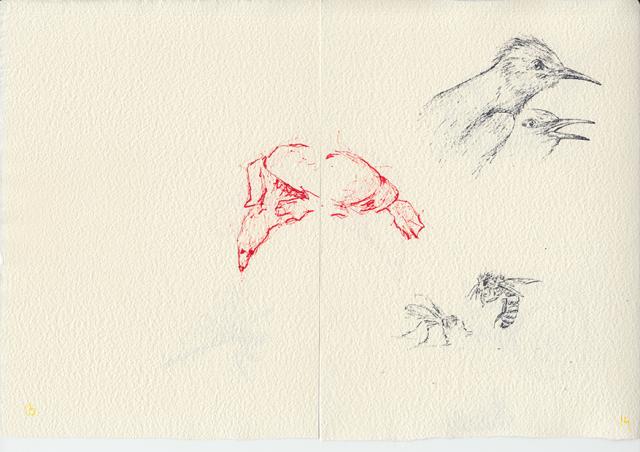Re-thinking Home: An Exercise
The proposed exercise is formed by the activities of Re-thinking Place and Re-thinking Time. These activities aim to generate a process of re-connecting individuals to the environment they live in. Therefore, activities are imagined to be experienced both individually and within a group. The participants are expected to be related directly or indirectly to this particular environment. The activities speak to dispossessed people, people with experience of dispossession, and people carrying the memories of dispossessed ancestors.
Re-Thinking Place
I would like to propose some activities that may initiate a process of reconnection for those who feel out of place. This activity requires that the participants discuss a site that they are actively engaged with. A river, a valley, a street, a village or a room, etc. The participants will need different materials for the visualisation process of things. Pens, pencils, notebooks, fabric, cameras, tablets, recorders etc. The consideration of seasons and outdoor conditions will be important. Because of that, the participants may need suitable shoes, water, snacks, umbrellas, scarves, jackets etc.
Arrival
--Choose an area, which provides a geographical example. A river, a valley, a street, a village, or a mountain, etc.
--Take some time to observe the landscape. Focus on your feelings and find a starting point for your walk on this site.
Walking
--Walk and try to develop a connection with the environment, try to observe and pay attention to the ruins and remains in this field as you walk. A feather, a house, piece of stone, cemetery, an impression of a ruin, pine cone, etc.
Drawing
--Start to draw the ‘things’ you encounter while you walk. (e.g. mushrooms, snails, birds, plants, stones, mountains, insects, water, trees etc.) This drawing session does not require talent or a particular aesthetically approach to express the object. The aim is to think through the object’s different relations with other things in its habitat while drawing.
--Consider drawing at least one absent subject makes you feel related to the present object (If you feel troubled with the drawing of absent subjects, use verbal expressions instead).
--Consider your walking paths and its relation with these things you encountered. Acknowledge your walk and the change of entities in relation to the space.
Listening/Imitating
--Try to listen to the environment you are in and analyse the sounds you hear. Try to imitate the sounds you hear in this land. If you feel encouraged enough, try to speak with one of the entities. (e.g. a bird, a leaf, a cat or a goat…)
Returning
--After your walking and drawing activities, get back to your starting point. Bring together the images and words you captured. Try to read the entanglements and stories among these things.
Re-Thinking Time
Consider your instinct and feelings to pick one of the ‘things’ you were engaged with in the previous activities. Focus on the time exposed by the thing, reminding you of the past and the passage of time. Exercise Re-thinking Time generates an ontological relation with the previous exercise re-thinking place. The primary aim is to understand, empathise or experience time of others. It is asked to the participants to pick one of the non-human entities from the re-thinking place and focus on it. It is something that reminds of the past and the passage of time.
For this, participants are expected to provide a medium for themselves to represent this entity’s journey in time. (Drawing, moving image, printed image etc.) For this, prepare your tool, pen, pencil, camera, notebook etc.
Past
--Consider the change of this ‘thing’, its birth, transformation and death.
--Look at its mythological representation.
--Search for its cultural metaphors.
Present
--Find out the thing’s place in its environment. What balance does it strike within its ecology? What role does it carry in its setting, what kind of species are related to it or endangered by it.
Is there any metaphor addressing the thing in your language?
Future
--How do you envision the life of this ‘thing’ in the future?
--What might happen to this thing in the future?
--How would you like to represent this process of time?
--Imagine/discuss the transformative process of this thing in the last couple of decades.
Choose a medium to represent this transformation process (text, photography, video, drawing, animation etc.)
**Images and exercises were produced with the support of FWF PEEK: “DisPossession: PostParticipatory Aesthetics and the Pedagogies of Land.” The images are: reproduced courtesy of Rojda Tuğrul, the artist.




